Glassware on currants: control measures
Probably, you have repeatedly asked the question: "Why do currant shoots and leaves dry?" Unfortunately, many of us (summer residents) are familiar with this misfortune, more precisely, a butterfly, or rather, its larvae (caterpillars) ...
Next, we will try to analyze all the measures and methods of dealing with currant glass.
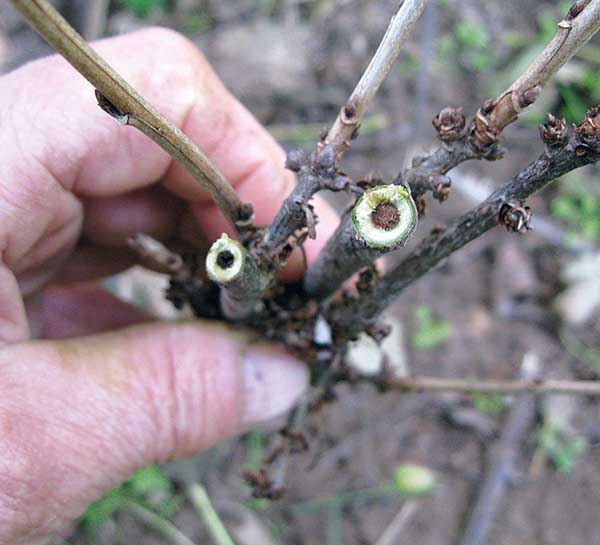
Content
Glassy: who is she, what does harm to currants
Glassy currant is a dangerous pest of all types of currants (black, red, white), which also damages gooseberries, raspberries, euonymus, and is less common on hazel (wild hazelnuts) and hornbeam.
Note! It is the larvae (caterpillars) that harm, not butterflies.
- Butterflies (adults are adults) only feed on flower nectar and dew. Then they mate, laying eggs on currant twigs, in different cracks and grooves.
The emergence of butterflies occurs at the end of the flowering of currants, while egg-laying occurs after flowering and the formation of ovaries, i.e. in late May-early June (the main landmark is the beginning of raspberry flowering).
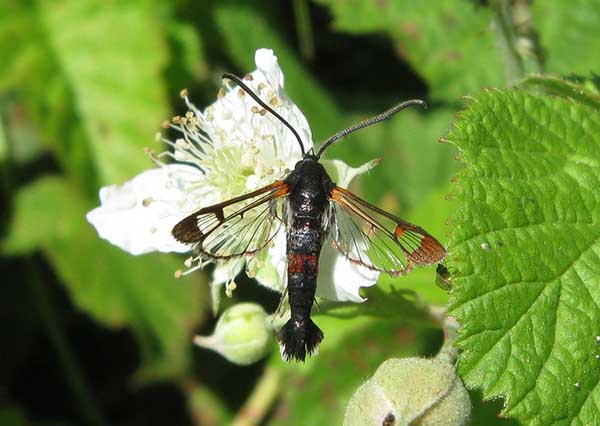
- However, caterpillars (larvae) harm, which bite into the shoots and feed on their core (which makes it black).
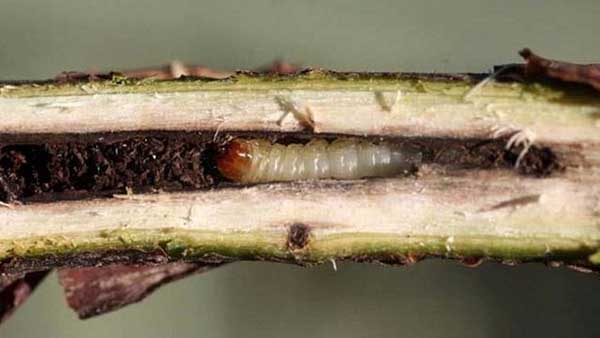
- After a while, the damaged branches (in which they gnawed through the passages) naturally stop growing, wither and dry out (along with the leaves).

As a result, caterpillars (larvae) hibernate inside the branches damaged by them, and next spring they pupate, gnaw holes in them and fly out in the form of butterflies (imago). And the cycle repeats.
Spring pruning is the main prevention of currant glass
As a rule, it is the old and unkempt currant bushes that are most often damaged by the glass.
Therefore, annually, long before flowering (preferably even before the buds swell), they carry out spring currant pruning, removing all dead, diseased, weak and old branches, including cutting out all the shoots damaged by glass, and then burning them.
Generally, pruning currants can be carried out in the fall (after fruiting).
How to understand that a currant shoot is damaged by a glass pan?
If you shortened (cut) a branch and see that in the center of the trunk it has black hole - this means that the bush is affected glass.
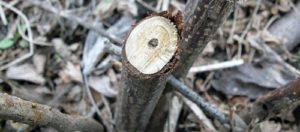
Although, of course, you can try to cut it to healthy wood, but most often you have to cut it completely (to the bottom).
If young annualse escapes can still be saved and trim to healthy, unaffected tissuethen more adult (two and older) shoots with barkusually cut exactly under the root.
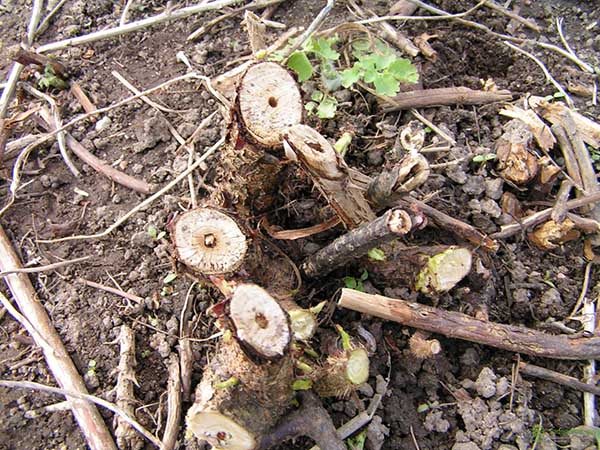
Important! If the glass case has gone completely into the root (you cut, but the black core does not disappear), then you will have to destroy the bush completely (dig it up and preferably burn it).
When and how to process currants from glass
Unfortunately, there are no proven effective biological insecticides against glassy larvae, as well as butterflies, so far.
No tobacco dust and wood ash from the glass will also help.
Therefore, you will have to spray with chemistry (in general, even it is not numerous).
However! You can try to treat the currants with insecticidal biological products Fitoverm, Aktofit, Bitoxibacillin, Lepidocid (and it is better to combine them, for example, Fitoverm + Bitoxybacillin), when the berries are tied and formed (7-10 days after flowering).
At least that's what the host of the Procvetok channel assures.
Processing scheme (timing)
According to the instructions of the drug Inta-Vir, the only insecticidal agent recommended for the treatment of currants from the glass, spraying with a working solution is carried out in the following stages of plant development:
- before flowering;
- and after harvest.
Indeed, the fight against glassworms on currants is complicated by the fact that the larvae are inside the shoots, where they are virtually impossible to reach with any drugs (unfortunately, there are no systemic insecticides).
Chemicals
Inta-Vir is the only chemical insecticide to combat currant glass in personal subsidiary plots (the active ingredient is Cypermethrin,enteric insecticide).
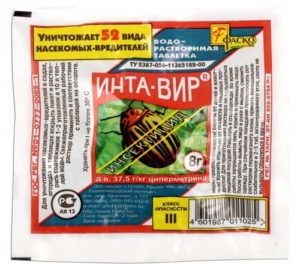
However, you can also try using other Cypermethrin-based insecticides against glass, such as:
- Inta-Ts-M (Cypermethrin and Malathion, enteric insecticide);
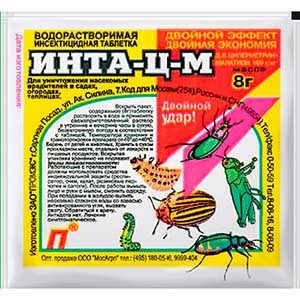
- Alatar (Cypermethrin and Malathion, enteric insecticide);
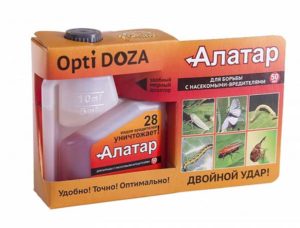
- Spark (Permethrin and Cypermethrin, enteric insecticides);
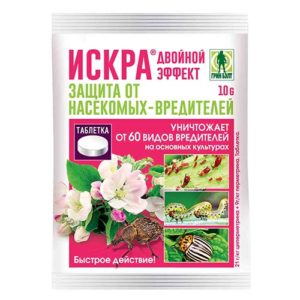
Interesting! Sometimes there is an opinion that bushes can be shed from the glass Aktaroy.
However, the instructions for the drug do not mention this.
Actually, the same applies to the above drugs (Inta-Ts-M, Alatar, Iskra).
- Shar Pei, Tsiperus (composed of only Cypermethrin);

- Clonrin (Zeta-cypermethrin and Clothianidin, systemic intestinal insecticide);
- Samurai Super, Sumition and other funds based on Fenitrothion.
Note! Unfortunately, Clonrin, Samurai Super, Sumition, Tsiperus, Sharpei, as a rule, are used only in agriculture, it is impossible to find these drugs (not in 1-5 liter bottles) for use in personal subsidiary plots (except Sharpei).
Folk remedy (bait)
Perhaps the simplest and most effective solution is to put jars of currant jam under the bushes during the currant flowering period. You will see how many glass butterflies you will find there!
Moreover, it is better to use exactly fermented jam... To do this, you can simply add water and wait for the beginning of the fermentation process.
We hope that now you know how to deal with currant glass. Health to your plants!

